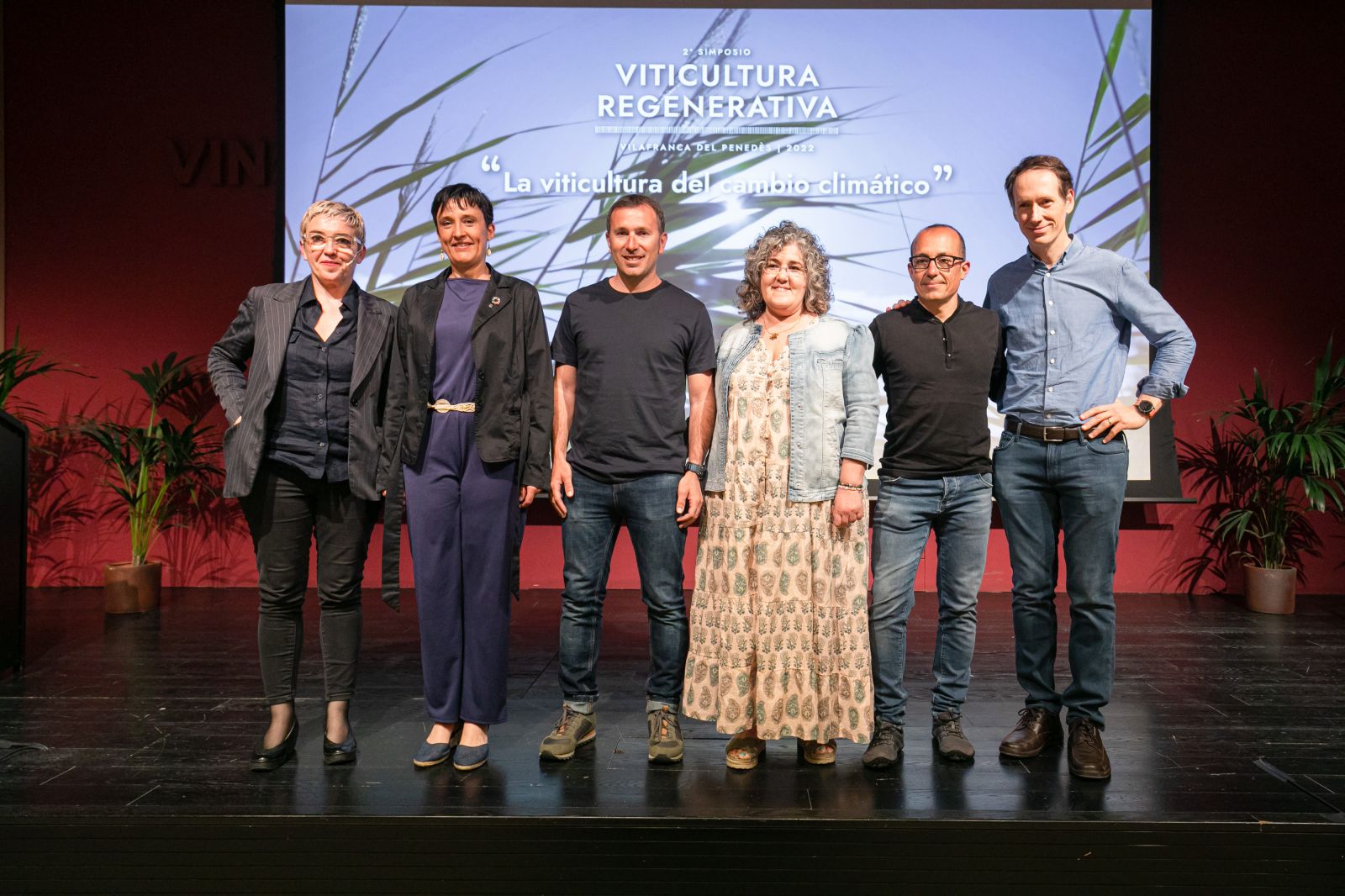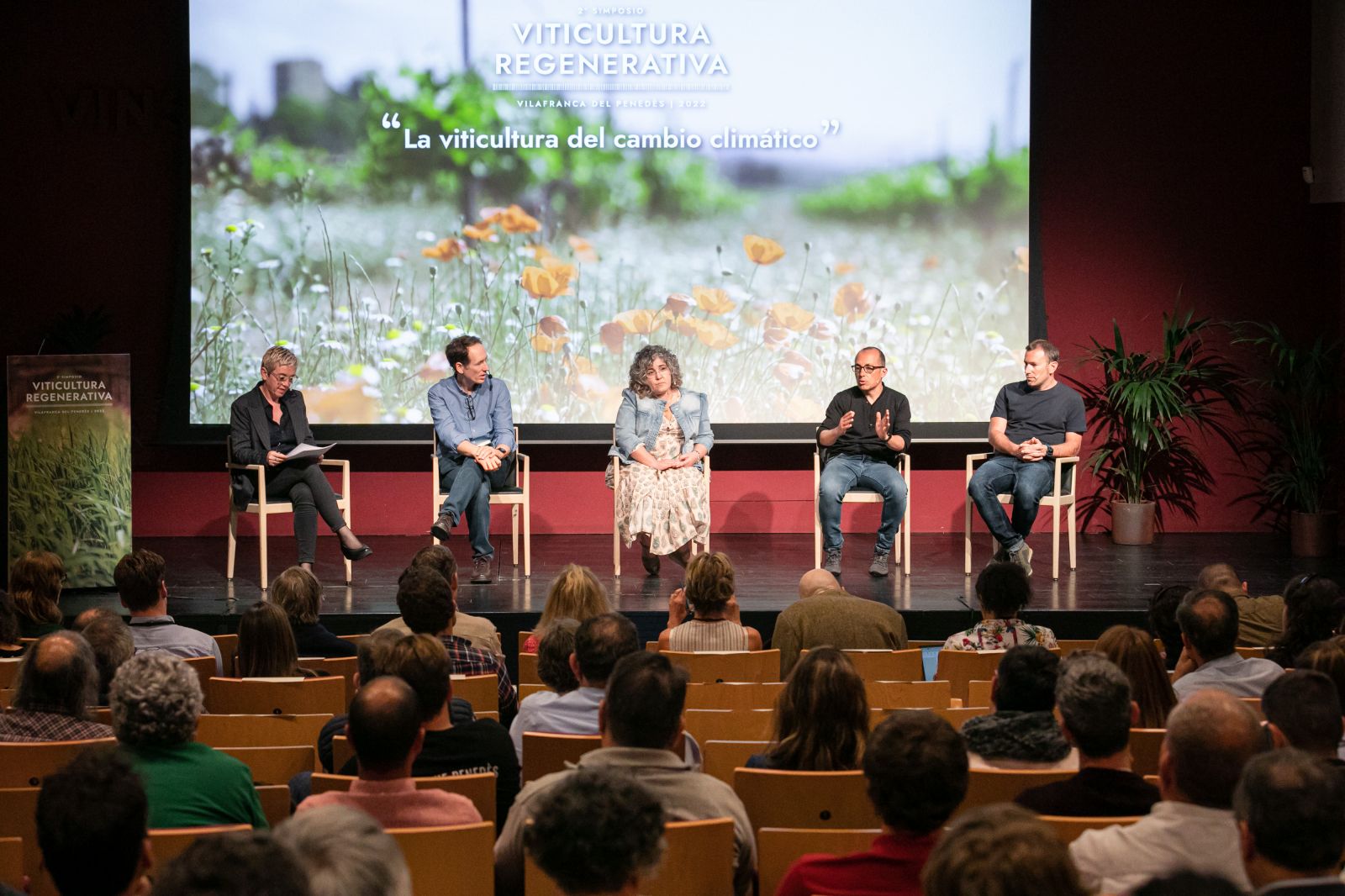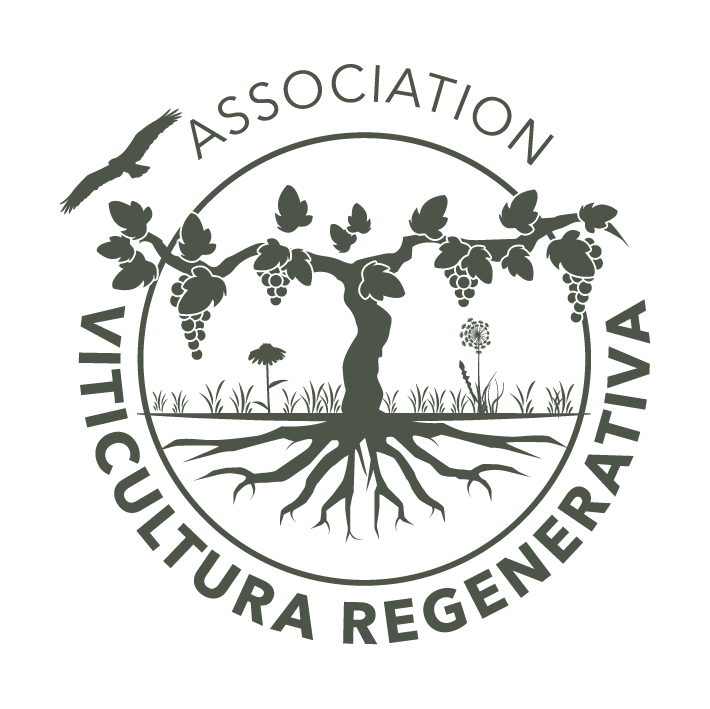Experts in regenerative viticulture show the sector the importance of switching models to slow climate change
For the second year in a row, we held the Regenerative Viticulture Conference in Vilafranca del Penedès, on Monday, 9 May. The conference featured a series of talks aimed at advocating this way of understanding and working the vineyards with the goal of allowing vine growers and wine producers to learn more about it and implement it for the good of the vines and the planet.
At the conference, we brought together speakers from both Spain and abroad who are experts in this new agricultural paradigm. The event, hosted by Margalida Ripoll, a journalist and editor-in-chief of Arrels magazine, included the participation of Pere Regull, the mayor of Vilafranca del Penedès, who supported the conference as the representative of a renowned winemaking region and one who wants it to ‘stay that way’. This is why, he said, we must ‘take action against climate change, which affects us every day’. The speaker representing government institutions was Elisenda Guillaumes, the Autonomous Government of Catalonia’s Director-General of Agriculture and Livestock Farming, who stressed that ‘the utmost attention and effort must be given to agricultural soils since they are an essential resource’ that have been ignored too often.
Miguel Torres Maczassek, the General Manager of Familia Torres and President of the Regenerative Viticulture Association, also used the occasion of the conference to announce the launch, in July, of the seal for international certification in regenerative viticulture, called the Regenerative Viticulture Alliance (RVA). Defined by Torres as ‘a first step’, this will lay the foundations to obtain the certification and also give recommendations for practices in the field, as well as support for self-analysis and external audits of the levels of organic matter, carbon fixation, and the presence of biodiversity.

Sharing knowledge about natural cycles and soil regeneration
Regenerative agriculture is based on understanding natural cycles and how agricultural activity can be used to help regenerate soils, reduce erosion, promote biodiversity, and increase the soil’s ability to absorb and store carbon, mitigating the effects of global warming and making this economic activity more resilient. Eliminating plant protection products and fertilizers, applying ground cover, and allowing grazing in the vineyards are just some examples of ways to restore the health of the soil and make it more resilient, more efficient in capturing carbon, and a source of wealth and work for people. Following the association’s founding aim, namely, sharing know-how, experiences, and information to facilitate the implementation of regenerative viticulture and maximize its benefits, the speakers at the Second Regenerative Viticulture Conference presented the advantages of this change in model to the roughly 300 in-person and virtual attendees.
The conference was opened by the American farmer Joel Salatin, who shared the key points from Polyface Farm, an example of regeneration and natural symbiosis. For the past 60 years, Salatin has been producing food products of the highest quality and regenerating the fertility of fields that were degraded from the way they had been used. Both crops and animals are thus part of a relationship with benefits for all the participants. This is why, according to Salatin, it is so essential to switch to regenerative agriculture. Given the problems with soil depletion, it is crucial to regenerate the soil.
Josep Ramon Sainz de la Maza, a regenerative agriculture consultant, farmer, and former conventional stockbreeder, defined regenerative agriculture as ‘infectious’ because, as he put it, when you explain it to someone, it gets inside them. It is a model based on the soil, where minerals, organic matter, and microbiology interact and make the ecosystem more efficient and resilient. This decomposition and recomposition cycle enriches the soil, nourishes the plants, and provides greater capacity to retain water and store carbon.
All these elements help one another from the bottom of the food chain upwards, and they give the soil structure. Human intervention – chemicals, working the soil, etc. – breaks these cycles, destroys the structure, and degrades the ground. Nature must be allowed to re-establish itself and also benefit from agriculture, and the first step is to stop attacking the soil. As explained by another speaker, Dania García, a Doctor of molecular biology and professor at Rovira i Virgili University, ‘we have to unlearn to learn again and apply the know-how that nature has passed on to us over thousands of millions of years’.
‘Farm with nature, not against it’
The vine grower Johan Reyneke, based in South Africa, has spent 20 years ‘trying to be a good farmer’. What is essential, he remarked, is to ‘farm with nature, not against it’, a shift that requires ‘re-education’. As a major contributor to global warming, those working in agriculture cannot ‘get up every day and make things worse’. ‘You can be a part of the problem or a part of the solution,’ he concluded. Regenerative agriculture is not an exact science, but we must learn from nature, as humans used to do until the appearance of ‘chemical’ agriculture in the mid-20th century.
Reyneke’s main example was water: since he has been working with regenerative agriculture, the soil has improved significantly and now he needs half as much water as he did in the year 2000. Now it retains water better, reducing erosion, thanks to the ground cover in the vineyards and to not working it. Manel Badia, an expert in keyline design, which analyzes topography and water flows holistically, agreed with this. ‘Ground cover creates microclimates,’ he explained. Together with the other practices, it improves soil health and suppresses erosion, an ‘incredibly serious’ problem that takes away 15 tonnes of soil per hectare per year in Spain alone. ‘The soil needs to be turned into a sponge,’ he emphasized. That way, there is no flooding, the water does not take the soil or crops away and it can be used.
‘People are afraid to take risks,’ noted Reyneke, but doing nothing is not an option and we must ‘persevere’. Today, there is experience and people who want to share it, such as the Regenerative Viticulture Association. Moreover, the market also appreciates these changes, and this may be a ‘motivation’: consumers are shifting from wanting ‘luxury’ to brands ‘with integrity’, and the combination of all of this may be the future of the industry.
The livestock experience
Pablo Borrelli’s field of experience lies in regenerative livestock farming, but he has the same knowledge base: shifting from ‘reductionist’ decisions to considering ‘the connections’ between all the elements, including the business and the social aspect. A trainer from the Savory Institute, the Argentine stressed ‘biomimicry’, respecting the natural configuration to achieve a high level of productivity and profitability in social capital – ‘knowledge, commitment, coordination’ – and biological capital, giving life to the soil. The mechanisms that determine soil fertility, the symbiosis between fungi, bacteria, and plants, understanding the food chain, from plants to carnivores, are useful for optimizing the benefits of livestock management, planning everything to strengthen regeneration, manage economic resources, and create a harmonious landscape, from infrastructure to living conditions. With patience, replanning, and correction, it is possible to achieve measurable improvements, for example, using the EOV method, developed by the Savory Institute.
Borrelli cited the Argentinean province of Corrientes as an example: if the cows emit 6,000 tons of carbon dioxide equivalent (CO2-eq) per year, thanks to holistic management, the soil captures 26,000 tonnes of CO2-eq, ‘a fantastic opportunity’ to reverse the effects of climate change ‘at a critical point in time’. Regenerative will become the norm, concluded Borrelli, ‘a new culture’ that will also make rural communities that were disappearing ‘come back to life’, recovering their customs and history, ‘enriched with a new perspective’. ‘There’s nothing to lose,’ he asserted, ‘and everything to gain’.

Experiences closer to home
Miguel Torres Maczassek, the General Manager of Familia Torres, also took the floor during the conference, advocating regenerative viticulture as a response to the threats of climate change, erosion, and the loss of soil fertility. As President of the Regenerative Viticulture Association, he praised the continuity of the conference and the ‘traction’ the association is gaining, as it now boasts around 30 members.
Torres explained the experiences of some of the members on their journeys to restore life to the soil and make it more fertile and resilient so it contributes to mitigating the effects of climate change in a way similar to how forests work. There are various methods, ranging from producing biofertilizers to grazing to control the ground cover, efficient water use, increasing plants’ immune system, etc., but they all have one element in common, which has provided structure to the entire Regenerative Viticulture Conference: being familiar with the soil and how it works, to help it to be healthier, repair the damage done, and get it to give as many benefits as possible, taking advantage of the processes that nature has developed over millions of years.
Recordings of the conference are available at www.viticulturaregenerativa.org/actos
